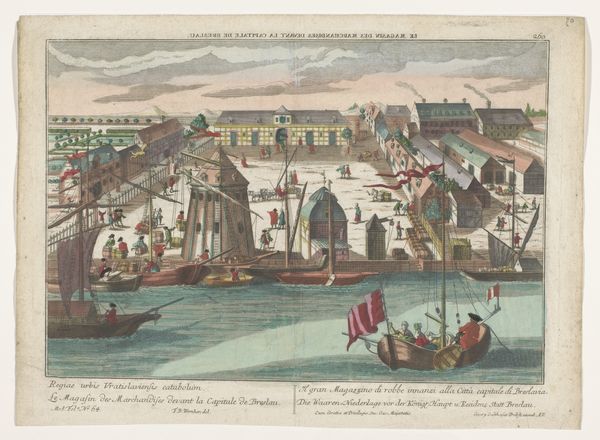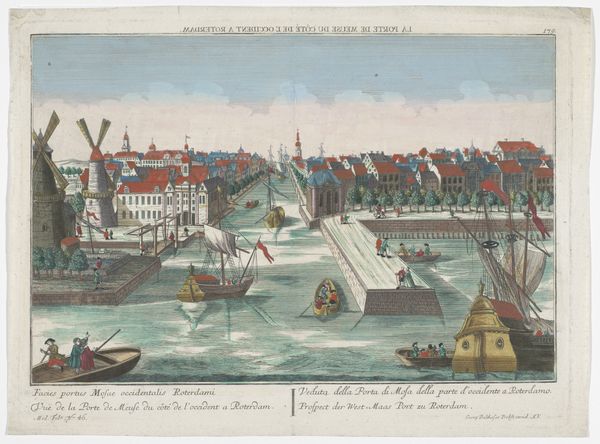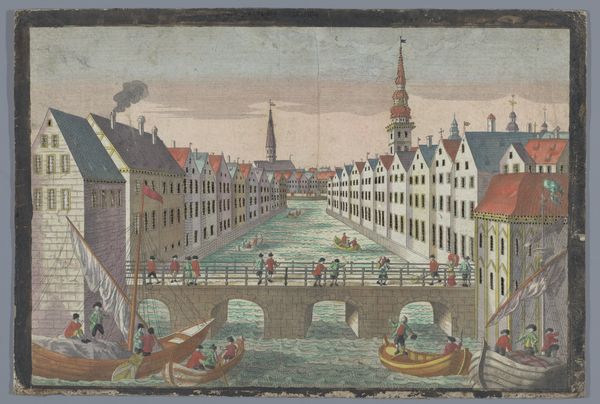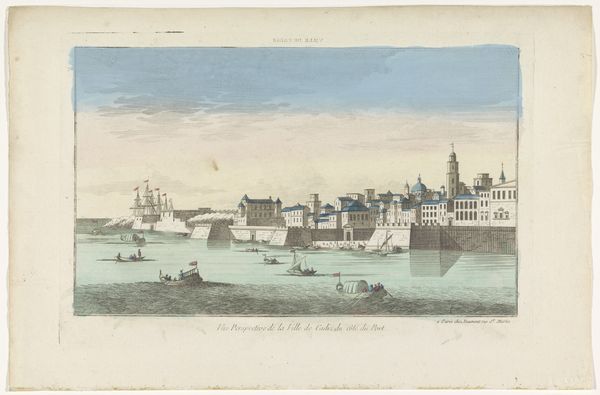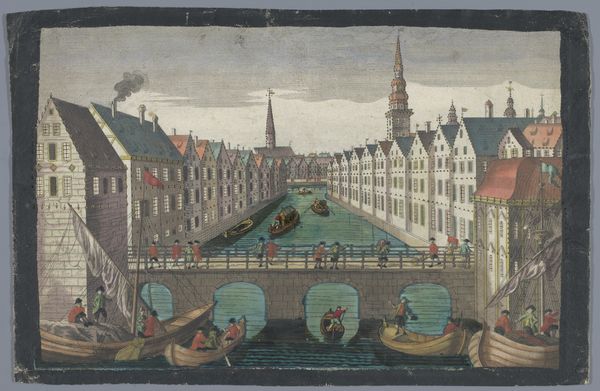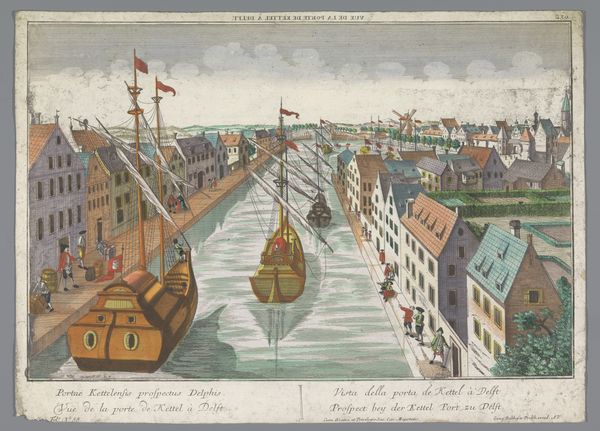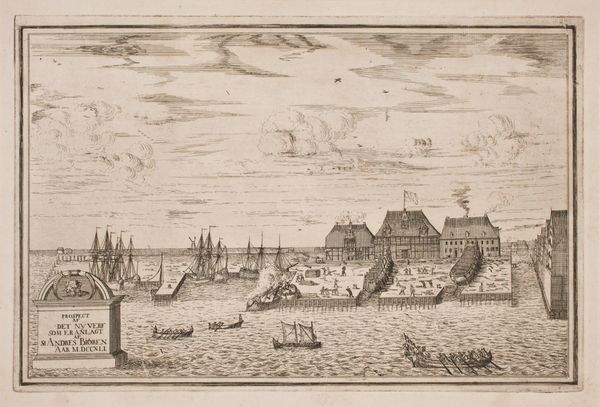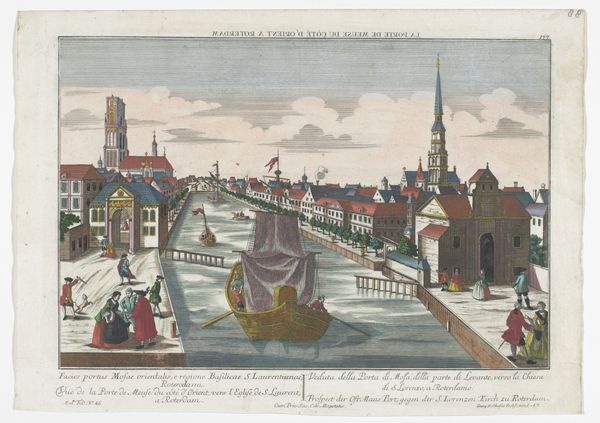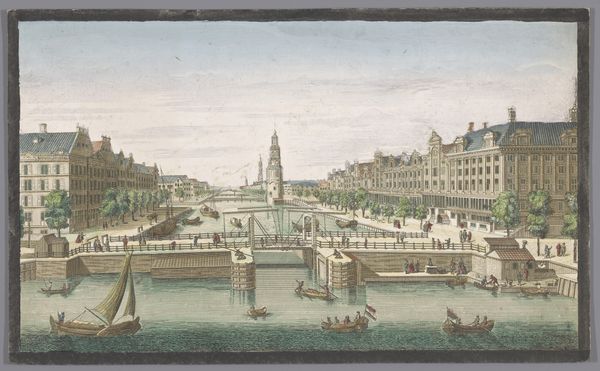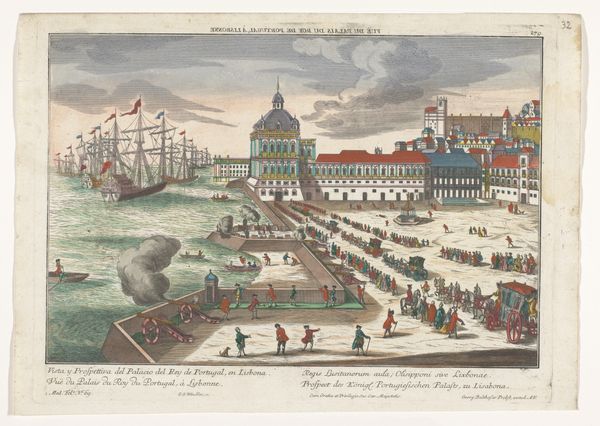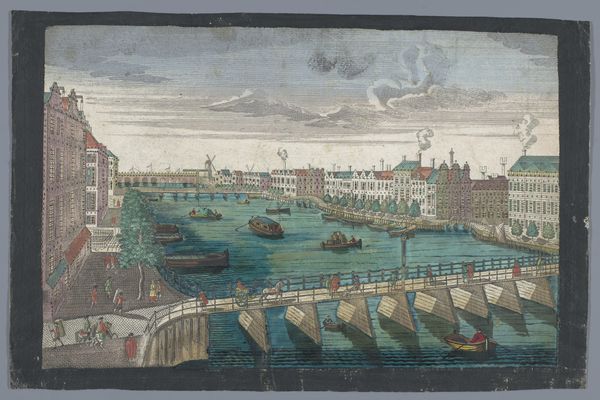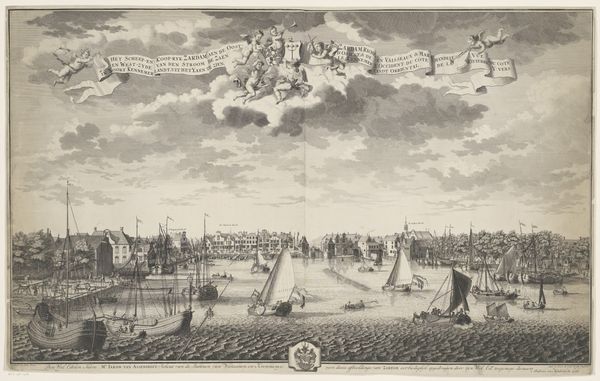
Gezicht op de entree van de moskee Aya Sophia te Constantinopel 1742 - 1801
0:00
0:00
#
toned paper
#
water colours
#
handmade artwork painting
#
personal sketchbook
#
coloured pencil
#
watercolour bleed
#
watercolour illustration
#
mixed medium
#
sketchbook art
#
watercolor
Dimensions: height 315 mm, width 452 mm
Copyright: Rijks Museum: Open Domain
This engraving, made by Georg Balthasar Probst in the 18th century, depicts the harbor of Istanbul, then called Constantinople, with the Hagia Sophia mosque in the background. This image, produced for a European audience, is less interested in the architecture of the mosque itself than it is in the bustling port. It highlights the economic activity and trade connections of the Ottoman Empire with Europe. The scene reflects a time when the Ottoman Empire was a significant power, and European powers were keenly aware of its economic and strategic importance. The artist uses visual cues, such as the variety of ships and the depiction of people engaged in trade, to convey a sense of a thriving commercial hub. To understand this image better, we can look at how the Ottomans saw themselves and the western gaze through which Europeans viewed them. The print invites us to consider the complex relationship between Europe and the Ottoman Empire during the 18th century.
Comments
No comments
Be the first to comment and join the conversation on the ultimate creative platform.
